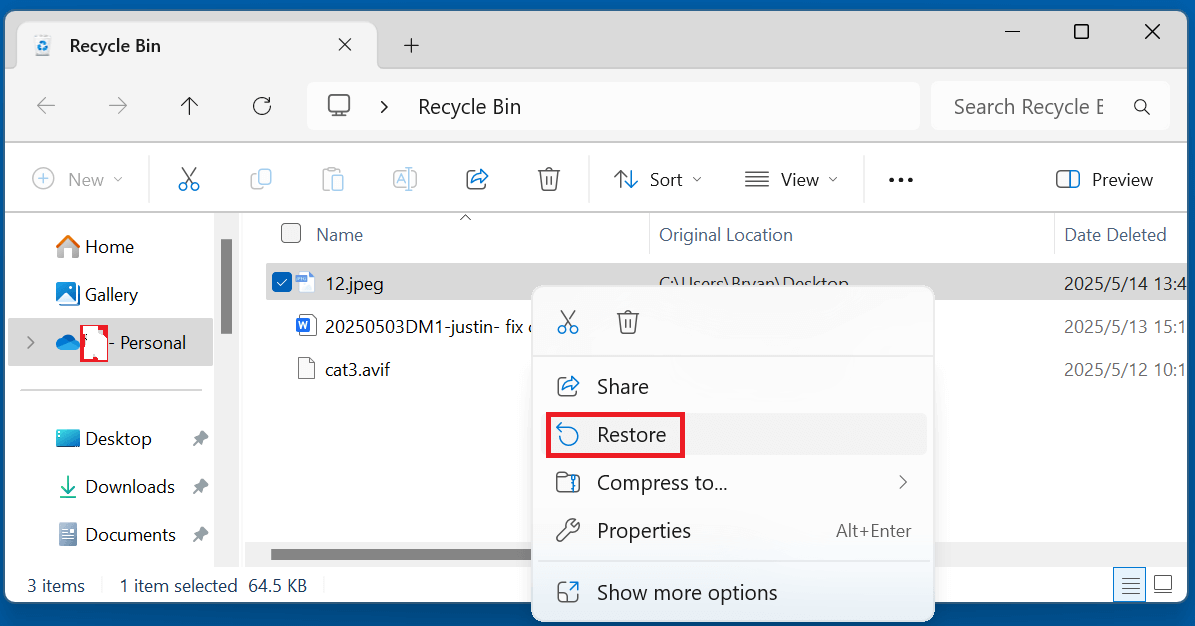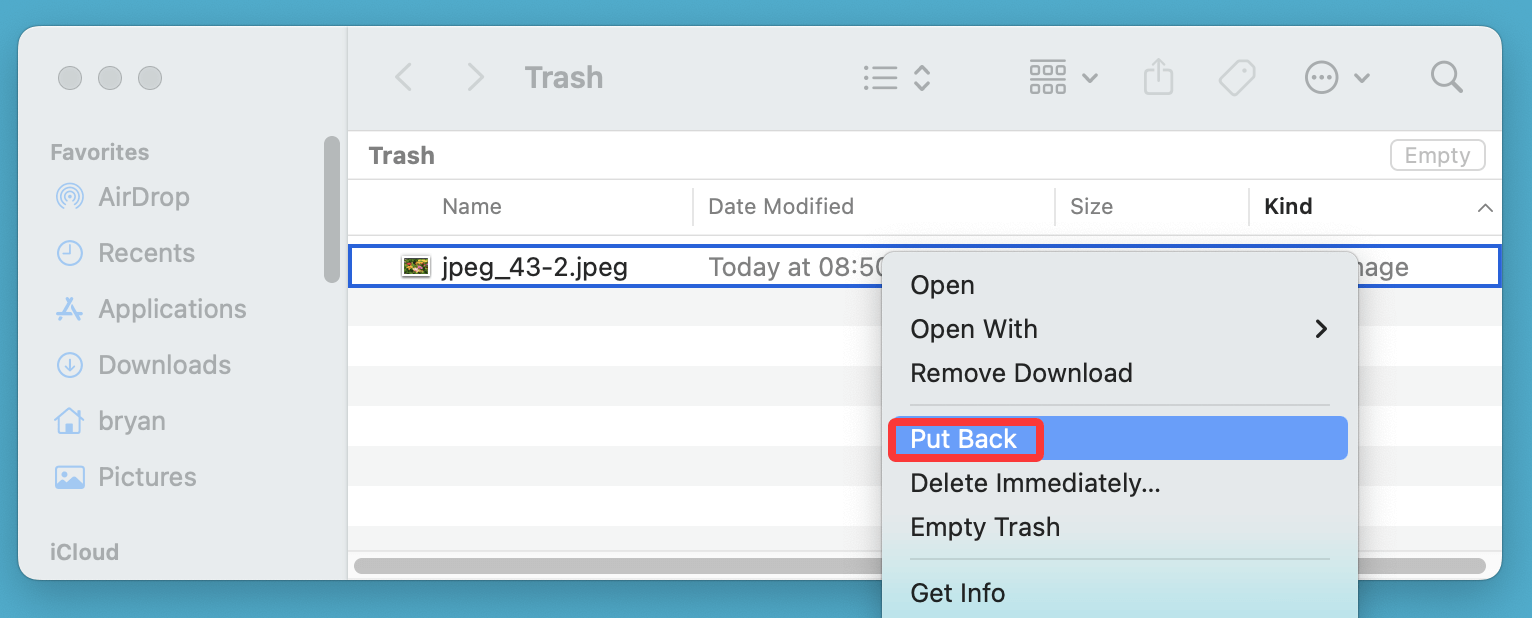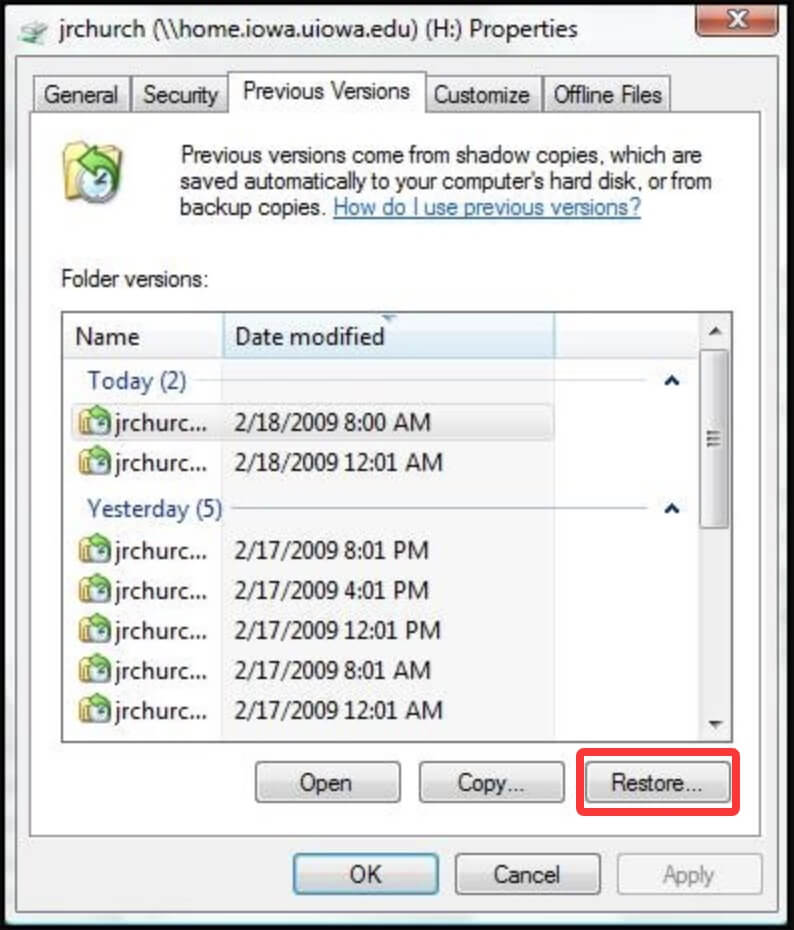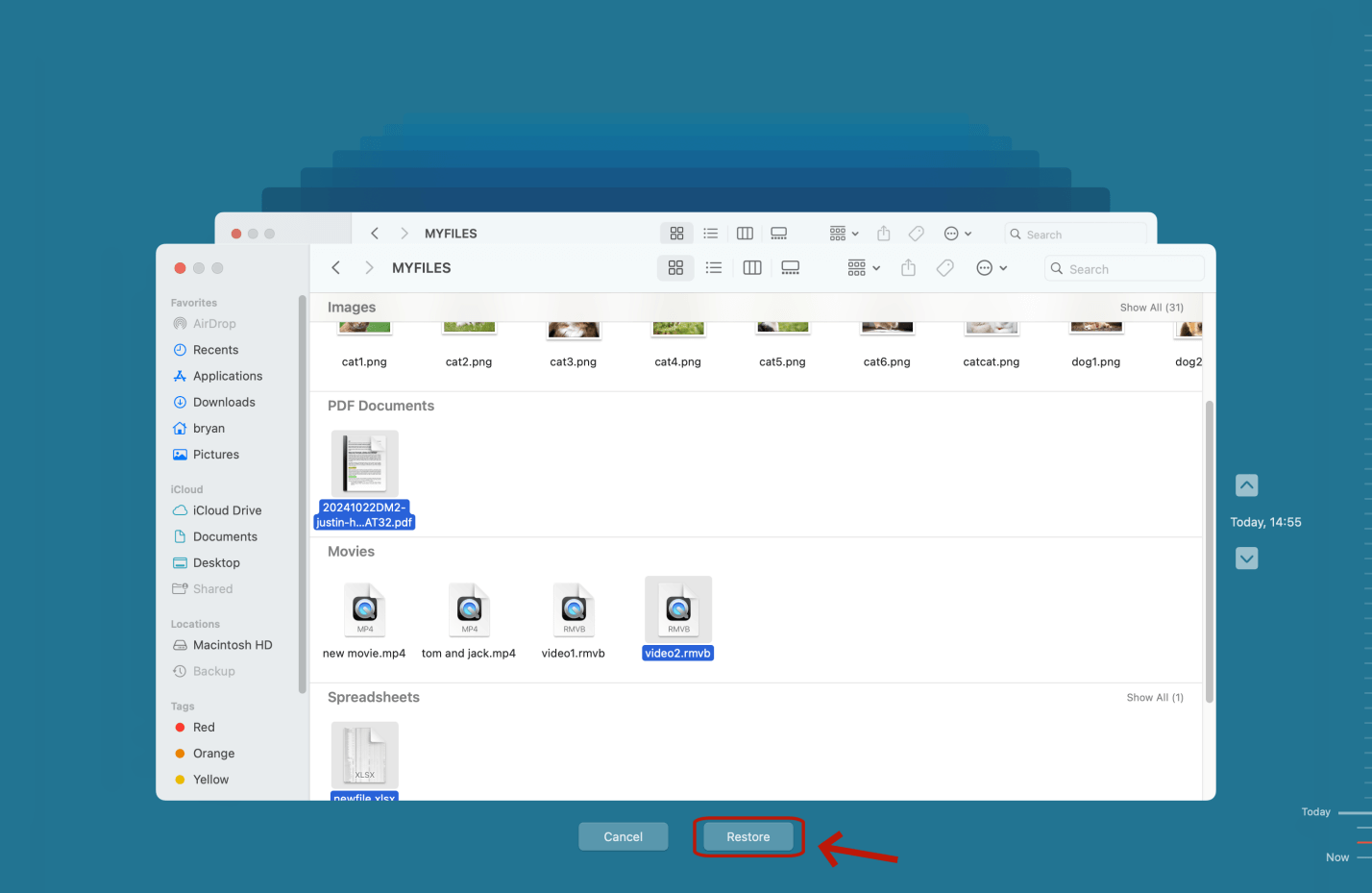Before we start: If you have deleted important JPEG images permanently and want to recover them, just try data recovery program - such as Donemax Data Recovery. It can easily and completely recover deleted, erased or lost JPEG images from digital camera, SD card, HDD, SSD, USB flash drive, PC, Mac, etc.
PAGE CONTENT:
JPEG (Joint Photographic Experts Group) images are one of the most commonly used formats for digital photographs due to their balance of quality and file size. They are used in everything from smartphones and digital cameras to websites and social media. But as common as JPEGs are, so are the mishaps that lead to their accidental deletion. Whether you've unintentionally deleted family photos, formatted your memory card, or experienced a corrupted hard drive, don't panic - there are several effective methods to recover your lost JPEG files.
This comprehensive guide will walk you through every possible solution to recover deleted JPEG images, explain how data deletion works, and offer prevention tips for the future.
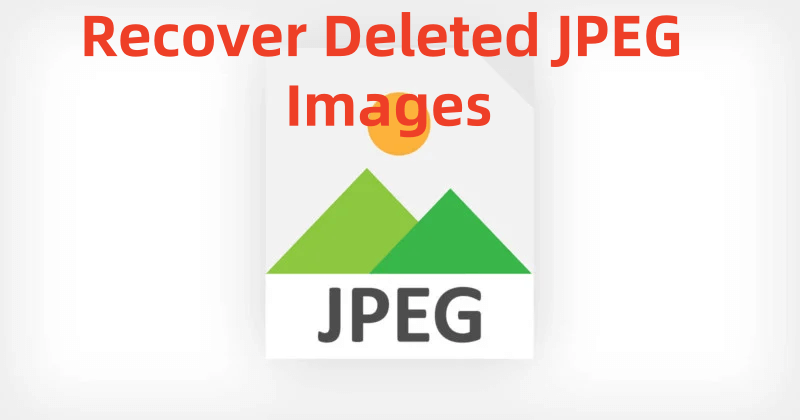
Understanding JPEG Image Deletion
Before jumping into recovery methods, it's essential to understand what happens when a JPEG file is deleted.
When you delete a JPEG image from your computer, it typically moves to the Recycle Bin (Windows) or Trash (macOS). Even when you empty these folders or use Shift + Delete (which bypasses the recycle bin), the actual data is not immediately erased. Instead, the file's space is marked as available for reuse, but the binary data remains intact until overwritten.
This means recovery is possible - as long as the file hasn't been overwritten by new data. However, the longer you wait, the higher the risk that the JPEG data gets replaced by something else.
Can Deleted JPEG Images Be Recovered?
In most cases, yes. JPEG image recovery is possible through several methods depending on the scenario:
- Recently deleted files may still be in your Recycle Bin or Trash.
- Files deleted from external drives can often be recovered with data recovery tools.
- Files lost due to formatting or corruption may still exist on the storage device and can be restored using professional software.
Factors Affecting Recoverability:
- Time since deletion.
- Whether new data has been saved to the same location.
- The type and condition of the storage medium.
- Availability of backups.
Let's go through each recovery method, step by step.
Best 4 Methods to Recover Deleted or Lost JPEG Images?
Method 1: Recover Deleted JPEG Images from Trash/Recycle Bin
This is the quickest and easiest way to recover JPEG images that were deleted from internal storage.
For Windows:
- Open the Recycle Bin from the desktop.
- Search for your deleted JPEG files.
- Right-click the image and select Restore. The file will return to its original location.
![recover deleted JPEG images]()
For Mac:
- Open the Trash icon in the dock.
- Locate your deleted images.
- Drag the JPEG files back to your desired folder or right-click and choose Put Back.
![recover deleted JPEG images]()
If you recently deleted the file, this method should recover it instantly.
Method 2: Restore JPEG Images from Backup
If you use backup solutions, this could be your saving grace.
For Windows Users:
Using File History:
- Type File History in the search bar and click Restore your files with File History.
- Navigate to the folder where your JPEG files were stored.
- Use the arrow buttons to browse different backup versions.
- Select your JPEG images and click Restore.
![recover deleted JPEG images]()
For Mac Users:
Using Time Machine:
- Connect your Time Machine backup drive.
- Open the folder where the JPEG was originally saved.
- Click the Time Machine icon in the menu bar and choose Browse Time Machine Backups.
- Use the timeline to go back to when the file existed.
- Select the JPEG and click Restore.
![recover deleted JPEG images]()
Cloud Backups:
If you use cloud services like Google Drive, Dropbox, or OneDrive:
- Check the Trash/Deleted folder within the cloud interface.
- Restore the file directly from the web portal.
Method 3: Use JPEG Recovery Software
When deleted JPEG files are no longer available in the Recycle Bin, Trash, or backups, the most effective solution is to use data recovery software. These tools are designed to scan the storage device's sectors and detect remnants of deleted files - often recovering photos that the operating system no longer displays.
How JPEG Recovery Software Works?
When you delete a JPEG image, the file's actual data remains on the drive until it's overwritten by new content. Recovery software accesses the file system directly, bypassing the operating system's view, to find and reconstruct those remnants based on file headers and structures.
Criteria for Choosing a Good JPEG Recovery Tool:
- Supported file formats (ensure it supports JPEG/JPG)
- Preview capability before recovery
- Deep scan option for formatted or corrupted drives
- User interface - friendly for beginners or flexible for professionals
- Operating system compatibility (Windows, macOS)
Let's look at a few widely trusted options and how to use them effectively.
Best JPEG Recovery Software:
Donemax Data Recovery is a comprehensive data recovery program. It supports to recover 2000+ file formats including jpeg images. If you are going to recover deleted, formatted or lost JPEG images, just download and install this data recovery program on your computer.
Donemax Data Recovery
- Recover lost JPEG images and other documents.
- Recover lost JPEG images from formatted drive or SD card.
- Recover JPEG images from corrupted device.
How to Use Recovery Software to Recover Lost JPEG Images:
Step 1. Stop using the device containing the deleted JPEGs. Install the recovery software - Donemax Data Recovery on a different drive (not the one you're recovering). Launch the software and select the affected drive.
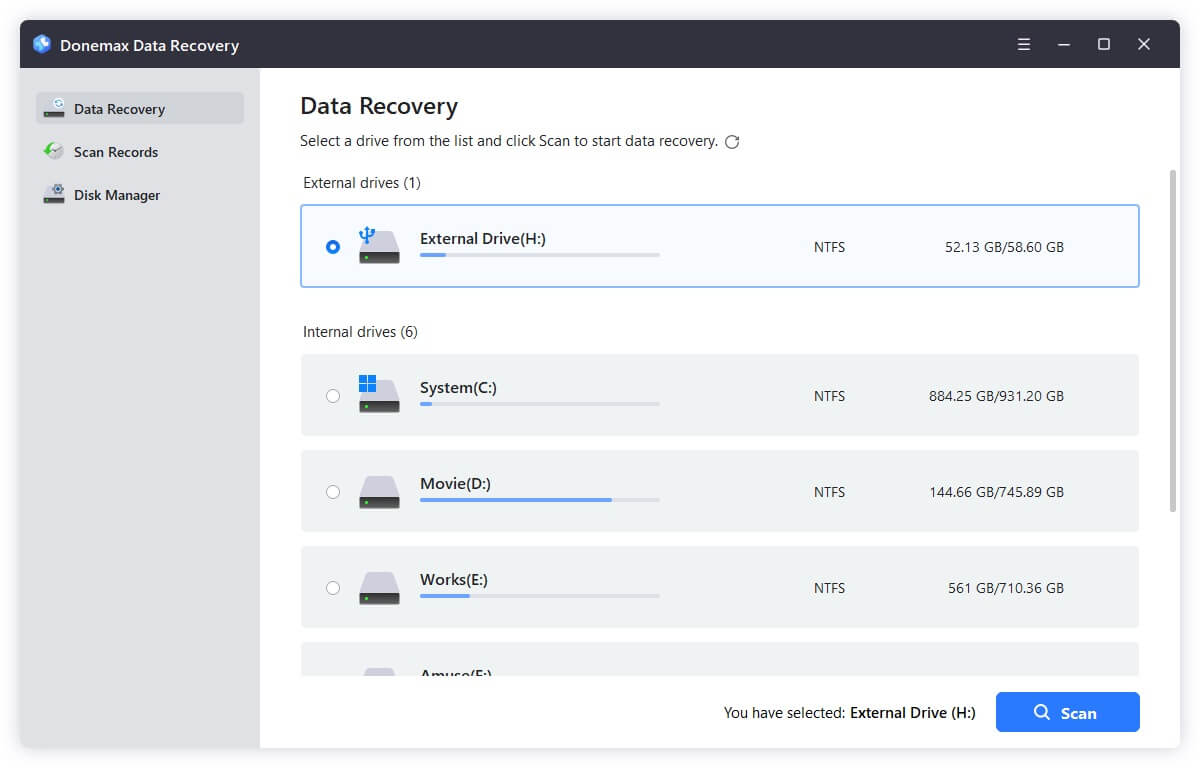
Step 2. Click on Scan button to deeply scan the selected drive and find all recoverable files including JPEG images.
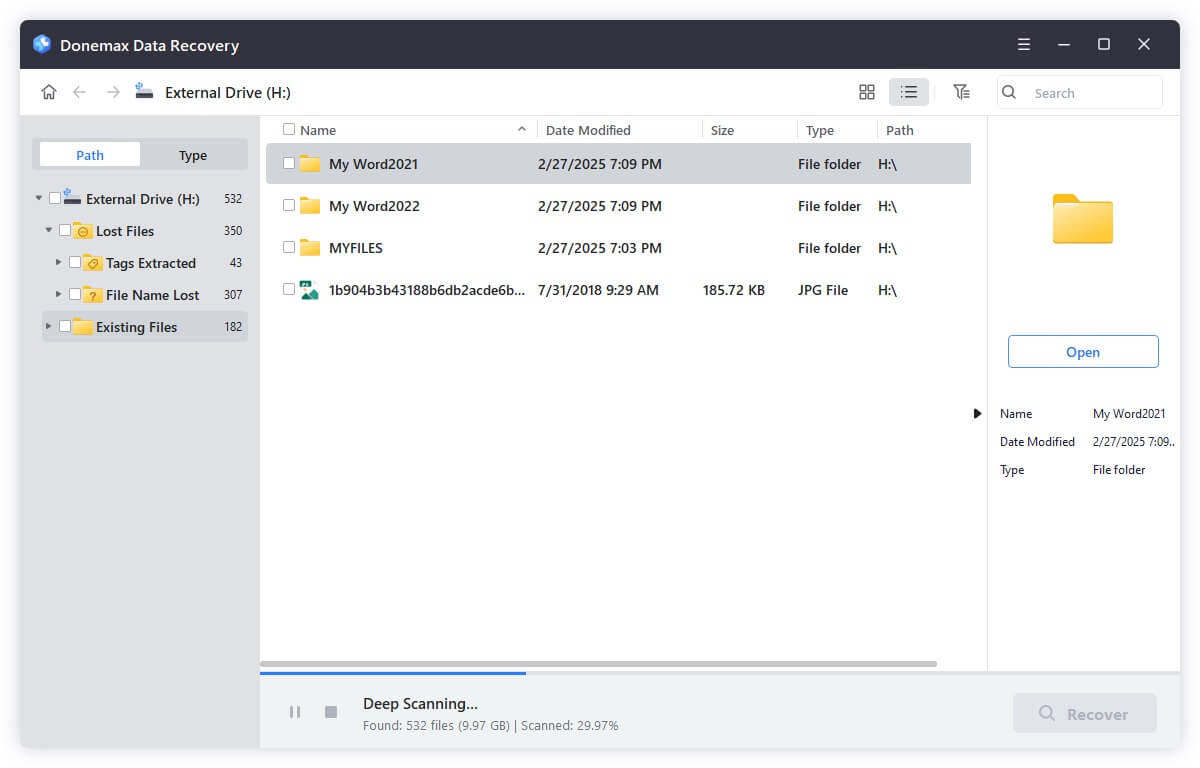
Step 3. After scanning, you can preview the JPEG images. Then select them, click on Recover button to save them.
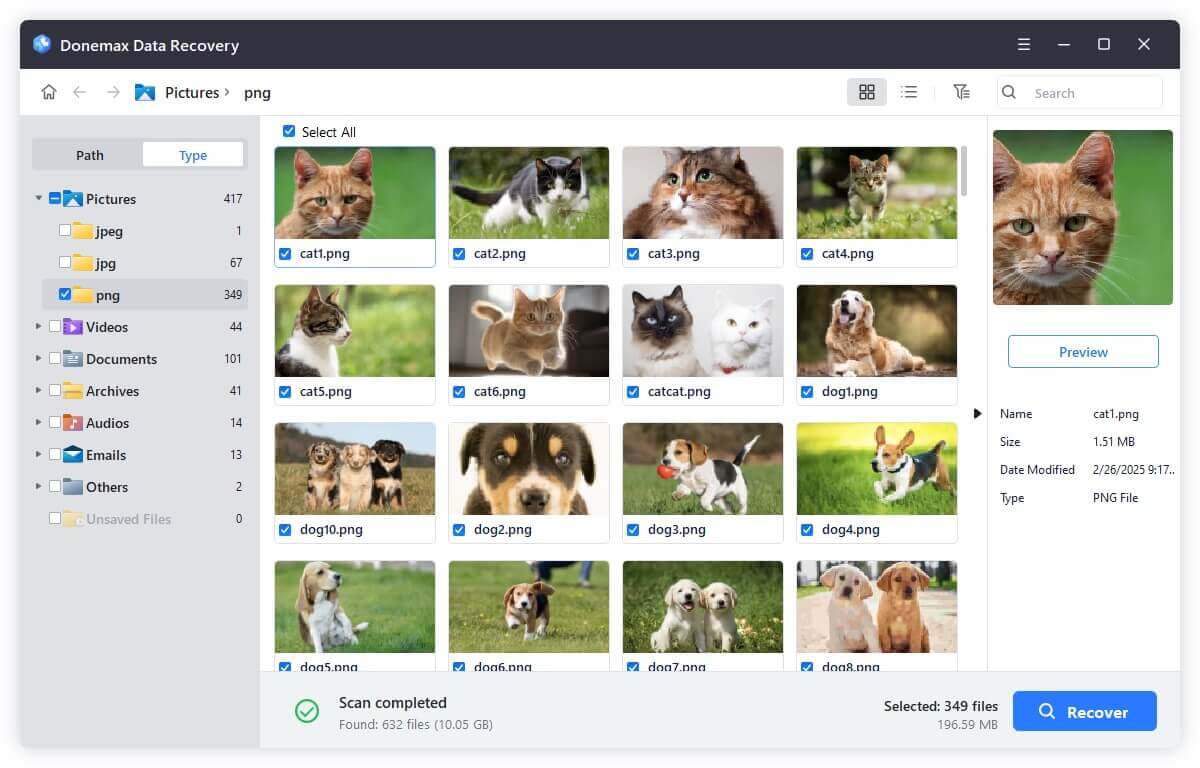
Best Practices While Using Recovery Software
- Never install recovery software on the affected drive. Always use a different volume or device to avoid overwriting data.
- Use the preview feature to check image quality before recovery.
- Save recovered JPEGs to a different location than the source.
- Label and organize your recovered files after retrieval to prevent confusion.
- Try multiple tools if the first one doesn't find all your photos. Different algorithms can yield different results.
Additional Tools Worth Mentioning
- Stellar Photo Recovery: Specialized for images and video, great for photographers.
- Do Your Data Recovery: Easy-to-use, beginner-friendly, with a high success rate.
- Wondershare Recoverit: Offers advanced video/photo recovery and supports bootable media recovery.
By using JPEG recovery software effectively, you stand a strong chance of retrieving your deleted or lost images - even from formatted or corrupted storage. However, it's essential to take precautions immediately after the loss and act fast before the data is permanently overwritten.
Method 4: Recover JPEG Images from External Devices
JPEGs stored on external drives, USB flash drives, SD cards, and camera memory cards can also be recovered using software.
Important Tips:
- Stop using the storage device immediately. Any new data could overwrite deleted JPEGs.
- Do not reformat the drive unless necessary and you plan to use software like Donemax Data Recovery, which can recover from formatted drives.
Using Software:
- Connect the external device to your computer.
- Launch a recovery tool like Donemax Data Recovery.
- Choose the external device from the list.
- Follow the scan and recovery process as described in Method 3.
For SD Cards:
- Many digital cameras store photos in JPEG format on SD cards.
- If your card becomes unreadable, try tools like SanDisk RescuePRO, CardRecovery, or general-purpose tools.
Tips to Maximize JPEG Image Recovery Success
Here are some best practices to improve the chances of successful JPEG image recovery:
- Act quickly. The longer you wait, the higher the risk of the file being overwritten.
- Avoid writing new data to the drive or card where JPEGs were deleted.
- Use quality software. Avoid unknown or shady recovery tools - they might contain malware.
- Recover files to a different drive or storage location.
- Don't interrupt scans, especially deep scans - they may take hours depending on disk size.
How to Prevent JPEG Image Loss in the Future?
Once you recover your deleted JPEGs, take steps to avoid this issue in the future.
1. Set Up Automatic Backups
- Use Windows File History, Time Machine, or third-party backup tools.
- Schedule daily or weekly backups.
2. Use Cloud Storage
- Store important images on Google Photos, iCloud, Dropbox, or OneDrive.
- These services often offer version history and trash bins with 30-day recovery periods.
3. Regularly Copy Data from External Devices
- SD cards and USB drives are more prone to corruption.
- Regularly transfer your data to a computer or cloud storage.
4. Use Reliable Antivirus Software
- Malware can delete or corrupt JPEG files.
- Keep your operating system and software updated.
5. Be Cautious While Formatting or Deleting Files
- Always double-check what you're deleting.
- Create a backup before formatting drives.
When to Seek Professional Data Recovery Help to Recovery JPEG Images
Sometimes, software solutions might not be enough - especially if the drive is physically damaged or corrupted beyond access.
Signs You Need a Professional:
- The storage device is not recognized by the system.
- Clicking or beeping noises from hard drives.
- You've tried software tools and nothing is recoverable.
- Important images are worth the cost of professional help.
What to Expect:
- Services like DriveSavers, Ontrack, or Stellar Data Recovery offer physical recovery labs.
- They use advanced equipment to extract data from damaged platters and chips.
- Recovery cost varies widely ($100 to $1000+), depending on the situation.
Conclusion
Losing JPEG images can be stressful, especially if they contain valuable memories or important work. Fortunately, there are multiple effective methods to recover deleted JPEG files - from simple recycle bin recovery to powerful third-party tools and even professional services.
The key is to act quickly, avoid overwriting data, and use trusted recovery software. Whether you're dealing with accidental deletion, formatting, or drive corruption, the steps outlined in this guide give you a solid chance to get your images back.
Once recovered, don't forget to back up your files regularly. A proactive approach to data storage and protection is the best way to ensure you never lose your precious JPEGs again.


Donemax Data Recovery
One of the best data recovery programs to recover deleted, formatted or lost data from PC, Mac, HDD, SSD, USB drive, SD card, camera, RAID, Sever or other storage devices.
Related Articles
- Apr 10, 2025[4 Methods] Recover Lost Data from Lenovo Laptop: A Comprehensive Guide
- Feb 24, 2025About NT Card & How to Recover Lost Data from NT Card?
- Jun 06, 2025[5 Methods] How to Recover Deleted FH10 File?
- Nov 11, 20248 Methods to Recover Deleted or Lost PSD Files (Adobe Photoshop Documents)
- Jun 04, 2025Best 4 Methods to Recover Deleted FFF Files
- Aug 10, 2025Folder Shows Empty, All Files Are Lost – How to Recover?

Maria
Maria is one of the senior writers & editors of Donemax who lives and works in Sydney, Australia. She loves PC, Mac and Internet Technology. She has 6 years of writing articles about data recovery on PC/Mac, disk cloning solution, data eraser and computer OS optimization, etc. She is also interested in testing various software and digital products.

Gerhard Chou
In order to effectively solve the problems for our customers, every article and troubleshooting solution published on our website has been strictly tested and practiced. Our editors love researching and using computers and testing software, and are willing to help computer users with their problems

